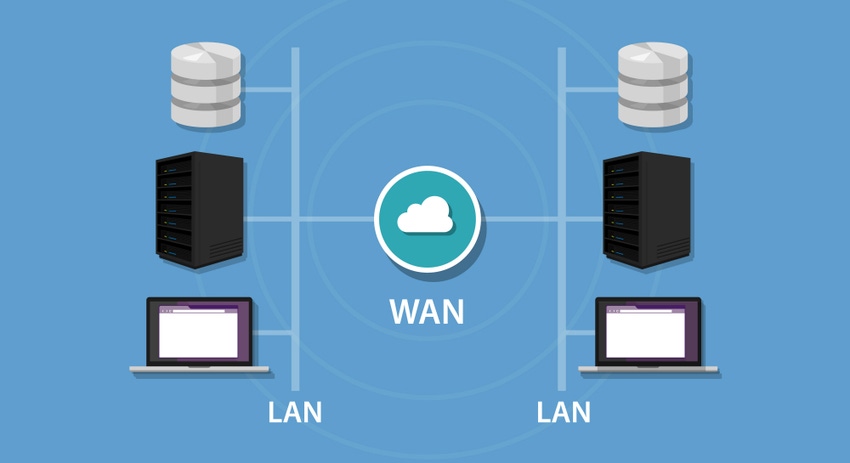Don't Let Legacy WANs Stifle Customers' Cloud Experience
Networks must evolve to improve cloud experience.
January 18, 2021

By Lori Cornmesser

Lori Cornmesser
As the pandemic lingers and businesses balance new safety guidelines with revenue goals, Charles Darwin’s assertions in his landmark book, “On The Origin of Species,” that species that adapt to their changing environment have the best chance of survival, still seems apropos more than a century after the book was first published. We’ve seen restaurants close down in-person dining and shift to online ordering with curbside pickup and delivery options, and many other businesses have implemented remote work strategies. Common among these profound changes is a growing reliance on the public cloud.
According to a 2020 Global Networking Trends Report from Cisco, half of all workloads will be run outside the enterprise data center by 2021, either in cloud and data center infrastructures or at the network edge. The same report notes that newer approaches to network architecture, such as software-defined networking (SDN) and network functions virtualization (NFV), currently carry 23% of traffic within enterprise data centers. Next year, the adoption of those network architectures is expected to grow to 44%.
Additionally, 85% of IT organizations are evaluating or already using the public cloud, and within the next 12 months, 94% of companies will be using or evaluating it.
Traditional WANs Aren’t Cloud Optimized
While some companies believe that moving to the cloud makes network considerations less relevant, nothing could be further from the truth. Adopting cloud services means that remote connectivity to those services is more critical than ever. It also means that traditional wide area network (WAN) architectures, which weren’t built to be cloud-first, agile or extensible, are no longer optimal, or preferable.
Software-defined wide area networking (SD-WAN) has evolved as a viable solution, integrating multiple transport types (e.g., MPLS, broadband, LTE) and allowing for direct connections to cloud-based platforms. It also enables dynamic path selection of application traffic to meet quality-of-service (QoS) standards. The opportunity to get the same or better connectivity for the same cost or a reduced cost has made SD-WAN one of the fastest-growing networking industry segments in recent years.
IDC reports that 95% of IT decision-makers have already deployed or plan to deploy SD-WAN in the next two years. But deploying SD-WAN without upgrading the critical tools that networks rely on to operate can suppress this essential technology’s full potential. If companies are to take full advantage of all the benefits SD-WAN brings, other network parts must evolve, too, including DDI. This shorthand term refers to the domain name system (DNS), dynamic host configuration protocol (DHCP) and IP address management (IPAM) functions. These processes are some of the first services that a device contacts when it connects to a network and can provide critical security and visibility for IT teams.
Implementing an integrated DDI helps solution providers simplify and automate the management of the interactions between DNS, DHCP and IPAM. These capabilities enable organizations to effectively cope with ever-increasing volumes of IP addresses and business dependency on core network services. DDI can also play a significant role in next-generation network technologies like SDN, facilitating an enterprise’s move to the cloud by focusing on automated provisioning and integration with …
… cloud orchestration systems.
SD-WANs Need a Modern DDI Platform
Traditionally, DDI platforms have been appliance-based and hosted in corporate data centers. When all enterprise applications were hosted internally, the destination for branch office traffic was the data center. Today, given the rise of cloud-based services for mission-critical functionality, almost one-third of branch office traffic goes directly to the cloud.
If DNS queries are resolved by backhauling to corporate data centers, remote users aren’t guaranteed connectivity to an entry point to the cloud closest to them. Remote users in South Carolina may be connected to the cloud in Oregon because their DNS queries were resolved at the Portland headquarters. The result is a poor end-user experience for SaaS applications like Microsoft Office 365 or Salesforce. Additionally, suppose remote sites are dependent on a link to the headquarters’ data center for DNS resolution. In that case, if that link is down, the SaaS apps become unavailable and business is interrupted. Local presence not only resolves DNS queries to their closest point in the cloud but also offers local survivability.
Another option for customers is to deliver DNS and DHCP services at each connected remote site. However, this quickly becomes cumbersome and costly as the number of individually managed remote locations that must be supported increases. All the benefits of SD-WAN, particularly the direct connections to cloud-based services such as Google G Suite, can be negated without the proper DDI architecture.
A new lightweight and agile DDI solution is needed that allows organizations to execute DDI functions at the enterprise edge without deploying dedicated hardware at each connection. One that is cloud-managed can help customers reduce costs, simplify branch networking, and give them the agility and scalability to quickly and seamlessly adjust to changing business needs. It enables DNS queries to be resolved directly without having to backhaul to a centralized data center, improving user experience and network reliability. And it simplifies network management, enabling administrators to centrally and automatically provision, manage and control policies for all remote locations. Cloud-managed DDI gives enterprises the ability to get the full value of their SD-WAN deployments by extending simplicity and agility to the network edge.
As enterprises adopt new cloud technologies and services, they’re fundamentally looking for a more straightforward experience for their branch office networks. A cloud-managed DDI platform is vital for extending network simplicity to the edges. This ensures that companies can realize the full potential of their hybrid infrastructure investments and continue to adapt to the cloud-first business challenges and opportunities ahead.
Lori Cornmesser, vice president of worldwide partner and alliance sales at Infoblox, began her career in the channel more than 25 years ago. Her leadership and strategic vision have resulted in multiple awards for her work. Since Lori joined Infoblox in May 2018, she has advocated for channel culture, prioritized the importance of building channel relationships, and hosted Infoblox’s inaugural Americas Partners Summit in November 2018. You can follow her on LinkedIn or @Infoblox on Twitter.
Read more about:
AgentsYou May Also Like
